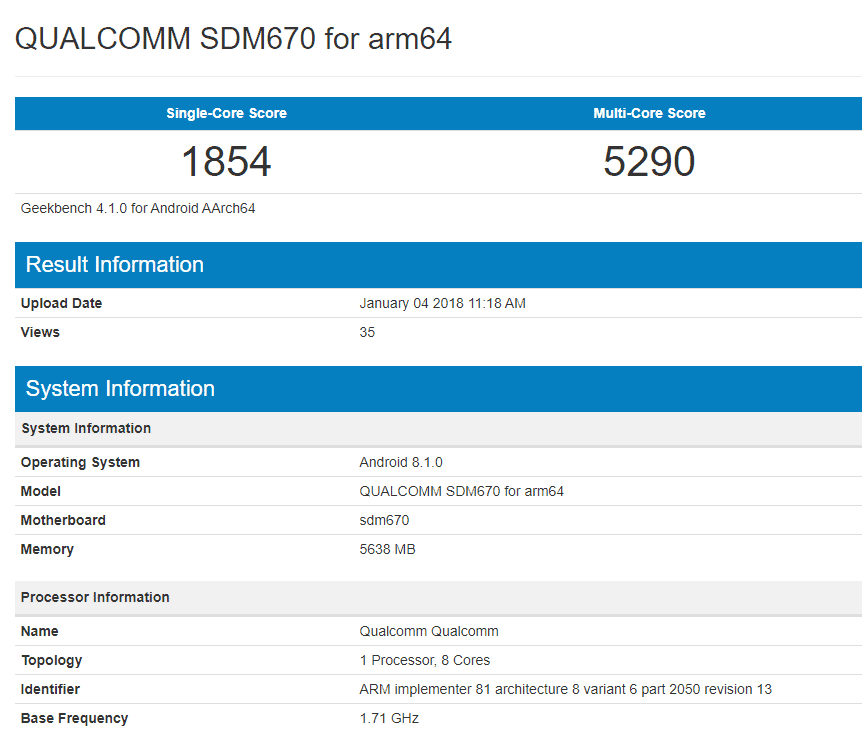Dubbed Snapdragon 670, the long-awaited successor to Snapdragon 660 is ready to launch. Snapdragon 670 chipset will be expected to power the upcoming premium midrange phones of 2018 and 2019. We can expect it to bring some fabulous performance to the market making it popular eventually.
Qualcomm switched to 14nm FinFET process in the year 2016 and the first heir was the Snapdragon 820. The Snapdragon 630 and 660 went partners with the 14nm node, which guaranteed increased efficiency from the chipset compared to their antecedents. The incoming Snapdragon 670 will be the first midrange processor to benefit from the process as the tech giant has already moved on to the newer 10nm FinFET process which has already been used in the 2017 flagship Snapdragon 835.
The new SoC, also known as SDM670, will be little different from the usual chipsets of Snapdragon. Snapdragon 670 octa-core will come with six small CPUs (low-end) and two large CPUs (high-end) in place of 4 high-end and 4 low-end cores in its previous chipsets. The hexacore will contain a Qualcomm variant of ARM Cortex-A55, Kryo 300 Silver while the dual-core cluster will come with a variant of ARM Cortex-A75, Kryo 300 Gold.
The hexacore cluster will come with a maximum clock speed of 1.7 GHz, the dual-core cluster will have a speed if 2.6GHz. Usually, the low-end cores are used in the basic smartphone actions while the high-end cores are used only when needed for playing games and other resource-intensive tasks. With Snapdragon 670 you can expect even much better performance as it is given with two extra cores.
Adreno 615 GPU, the upgrading over Adreno 512, is used in Snapdragon 670 which will operate at a standard rate of 450/650 MHz but will include a turbo function boosting the speed to a maximum of 700 MHz. The leaked appearance of Snapdragon 670 in the benchmarks surely gives us an idea about the new processor. The SDM670 managed a score of 1854 in the single-core and a score of 5290 in the multi-core tests due to the pairing of 6GB RAM and Android 8.1 Oreo.

Snapdragon X2x LTE modem in Qualcomm Snapdragon 670 manages to click the downlink speed of up to 1GBps. According to Qualcomm, you will get a much longer battery life along with optimum performance due to the 10nm node. The 10nm node promises a small chip footprint allowing the OEMs to include bigger batteries with slimmer designs inside phones.
Snapdragon 670 will have a specialized image processor allowing high-resolution dual-lens cameras. The maximum resolution of the dual-lens cameras is still unknown. Snapdragon 670 will be having a full HD resolution display screens supporting WQHD resolutions of 2560 × 1440 pixels as the premium midrange supports the same. We have to wait little more to know about the launching date of Snapdragon but we can probably expect something favorable on the approaching MWC 2018.

Leave a Reply